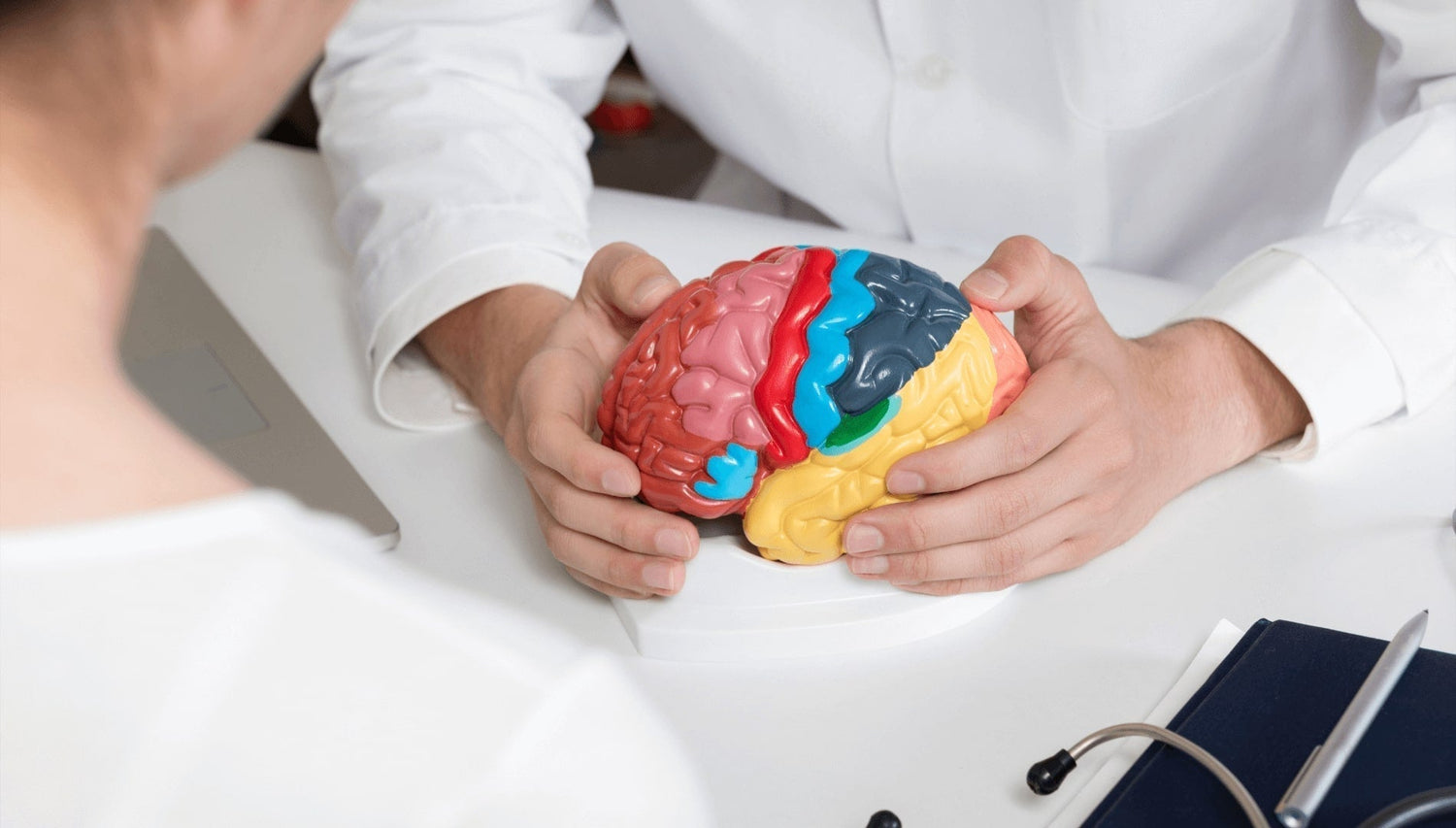When we think about hearing loss or using hearing aids, most people immediately focus on the ears — after all, they are the organs that pick up sounds. But have you ever wondered what part of the brain controls hearing? How your brain interprets and makes sense of the sounds your ears pick up is just as vital as the health of your ears themselves.
In this article, I want to take you on a journey inside the brain to explain exactly what part of the brain controls your hearing, share some real-life experiences, and offer practical tips for keeping both your ears and brain sharp. Along the way, I’ll naturally introduce the Cearvol Diamond X1, which have helped many people improve their listening experience.
🚀 Navigate This Post
- ➤ Part 1: The Brain’s Role in Hearing — More Than Just Ears
- ➤ Part 2: What Part of the Brain Controls Your Hearing in Everyday Life?
- ➤ Part 3: How Hearing Loss Affects the Brain’s Processing
- ➤ Part 4: Choosing Hearing Aids That Support Your Brain’s Hearing
- ➤ Part 5: How to Keep Your Brain’s Hearing Sharp Every Day?
You may also be interested in:
- Musical Ear Syndrome: The Strange Sound You’re Not Imagining!
- Pinched Nerves and Tinnitus - Is Your Neck Secretly Causing That Ear‑Ring?
- Can You Hear Colors? The Fascinating World of Chromesthesia Uncovered!
Part 1: The Brain’s Role in Hearing — More Than Just Ears
Before we dive into specifics, let’s clear one important thing up: hearing isn’t just about your ears catching sound waves. The brain plays a critical role in interpreting those sounds and turning them into meaningful information.
So, what part of the brain controls hearing? The answer lies primarily in the auditory cortex, a region located in the temporal lobe on both sides of your brain. This area processes the electrical signals sent from your ears and helps you understand what you’re hearing — whether it’s your favorite song, a loved one’s voice, or background noise.
1. How Sound Travels to Your Brain
Sound waves enter your ear, get converted into electrical signals by the inner ear, and then travel along the auditory nerve to the brainstem. The brainstem acts as an important relay station, doing some preliminary processing before sending the information up to the auditory cortex.

2. Why Understanding Your Brain Matters
I once worked with a gentleman named George, who struggled to follow conversations even after getting hearing aids. After a thorough check, we realized that while his ears were doing their job, his brain was having trouble processing complex sounds, especially in noisy environments. This is a common issue as we age — our brain's auditory regions don’t always keep up with the input from the ears.
To help support your brain’s hearing, incorporating listening practice into your daily routine can make a significant difference.
Part 2: What Part of the Brain Controls Your Hearing in Everyday Life?
Now that you know the auditory cortex is the main player, let’s talk about how your brain handles sounds in real life.
1. The Auditory Cortex in the Temporal Lobe
This is where the magic happens. The auditory cortex breaks down complex sounds — from recognizing words and voices to identifying music and environmental noises.

2. How Other Brain Regions Help You Hear
Your hippocampus connects sounds to memories (think of recalling a favorite song), and your frontal lobe helps you focus on specific sounds, like tuning into a conversation at a noisy family gathering. It’s a team effort!
Imagine being at a bustling dinner party. While your ears pick up lots of chatter, your brain filters and focuses on what your spouse is saying. This selective hearing depends heavily on the brain's attention and auditory control centers.
Part 3: How Hearing Loss Affects the Brain’s Processing
When hearing loss occurs, the brain receives less stimulation. Over time, this can lead to changes in how the auditory cortex functions, sometimes making it harder to understand speech even if hearing aids are worn.
1. Brain Plasticity and Hearing Improvement
Fortunately, the brain is adaptable — a quality called neuroplasticity. Wearing hearing aids regularly helps your brain “rewire” itself to better process sounds.
That’s why it’s important to use hearing aid consistently. Skipping days means your brain doesn’t get the sound stimulation it needs to stay sharp.

2. Real-World Example
Take Tom, for instance, a 72-year-old who hesitated to wear hearing aids because he felt they were uncomfortable at first. After understanding brain plasticity, he committed to daily use of a good quality device like the Cearvol Diamond X1, combined with listening exercises. Over months, his comprehension, especially in noisy places, improved remarkably.
Part 4: Choosing Hearing Aids That Support Your Brain’s Hearing
Not all hearing aids are equal, especially when it comes to supporting your brain’s processing abilities.
1. Why Hearing Aids of Good Quality Matter
Devices that deliver clear, natural sound and reduce background noise ease the workload on your brain. Poor sound quality forces your brain to work harder, causing fatigue and frustration.
If you’re exploring options, you can check out this detailed guide on hearing aids of good quality to understand which features really matter.

Diamond X1 - Best Hearing Aids with Bluetooth
Newcomer Price
$249.99 $309.99
- ✔ Adaptive sound modes for clear hearing.
- ✔ Bluetooth for calls & streaming.
- ✔ App-controlled, customizable adjustments.
- ✔ Rechargeable & fast charging.
- ✔ Ideal for mild to moderate hearing loss.
2. Features That Help Your Brain
Look for hearing aids with Bluetooth connectivity, noise reduction, and rechargeable batteries. These features not only improve sound quality but also make the devices easier to integrate into your lifestyle.
Part 5: How to Keep Your Brain’s Hearing Sharp Every Day?
1. Practice Makes Perfect
Just like muscles, your brain’s hearing centers benefit from regular exercise. Engaging in listening activities, such as audiobooks or conversations focused on clarity, can help.
2. Healthy Habits Support Brain Hearing
Physical exercise, balanced nutrition, and mental stimulation all promote healthy brain function, which supports the parts of your brain responsible for hearing.

3. Take Advantage of Technology
Pairing your efforts with quality hearing aids like the Cearvol Diamond X1 can significantly enhance your hearing experience and brain engagement.
Conclusion
Understanding what part of the brain controls hearing helps us appreciate that hearing is not just about ears — it’s a sophisticated collaboration with your brain. The auditory cortex and related brain areas play a crucial role in interpreting sound.
If you or someone you love is experiencing hearing challenges, consider investing in a quality hearing aid like the Cearvol hearing aids and commit to consistent use. Combined with listening practice and healthy lifestyle choices, this approach supports both your ears and brain for better hearing.





Leave a comment
All comments are moderated before being published.
This site is protected by hCaptcha and the hCaptcha Privacy Policy and Terms of Service apply.